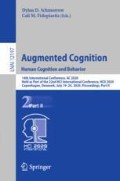Abstract
In this paper, we propose to apply recent advances in deep learning to design and train algorithms to localize, identify, and track small maritime objects under varying conditions (e.g., a snowstorm, high glare, night), and in computing-with-words to identify threatening activities where lack of training data precludes the use of deep learning. The recent rise of maritime piracy and attacks on transportation ships has cost the global economy several billion dollars. To counter the threat, researchers have proposed agent-driven modeling to capture the dynamics of the maritime transportation system, and to score the potential of a range of piracy countermeasures. Combining information from onboard sensors and cameras with intelligence from external sources for early piracy threat detection has shown promising results but lacks real-time updates for situational context. Such systems can benefit from early warnings, such as “a boat is approaching the ship and accelerating,” “a boat is circling the ship,” or “two boats are diverging close to the ship.” Existing onboard cameras capture these activities, but there are no automated processing procedures of this type of patterns to inform the early warning system. Visual data feed is used by crew only after they have been alerted of a possible attack. Camera sensors are inexpensive but transforming the incoming video data streams into actionable items still requires expensive human processing.
Access this chapter
Tax calculation will be finalised at checkout
Purchases are for personal use only
Notes
- 1.
The term “safe distance” has a fuzzy connotation. Nevertheless, a CWN engineer might attempt to provide a crisp and accurate definition for this term.
References
Marchione, E., Johnson, S.D.: Spatial, temporal and spatio-temporal patterns of maritime piracy. J. Res. Crime Delinquency 50(4), 504–524 (2013)
Vaněk, O., Jakob, M., Hrstka, O., Pěchoučeki, M.: Agent-based model of maritime traffic in piracy-affected waters. Transp. Res. Part C: Emerg. Technol. 36, 157–176 (2013)
Patino, L., Cane, T., Vallee, A., Ferryman, J.: PETS 2016: dataset and challenge. In: The IEEE Conference on Computer Vision and Pattern Recognition (CVPR) Workshops, pp. 1–8 (2016)
Tamir, D., Newman, S., Rishe, N., Kandel, A., Zadeh, L.: Computing with words a framework for human computer interaction. In: The International Conference on Human Computer Interaction HCII-2019, pp. 356–372 (2019)
Russakovsky, O., et al.: Imagenet large scale visual recognition challenge. Int. J. Comput. Vision 115(3), 211–252 (2015). https://doi.org/10.1007/s11263-015-0816-y
Warren, N., Garrard, B., Staudt, E., Tesic, J.: Transfer learning of deep neural networks for visual collaborative maritime asset identification. In: 2018 IEEE 4th International Conference on Collaboration and Internet Computing (CIC), Philadelphia, PA, pp. 246–255 (2018)
Wojke, N., Bewley, A.: Deep cosine metric learning for person re-identification. In: IEEE Winter Conference on Applications of Computer Vision (WACV) (2018)
Pailla, D.R., Kollerathu, V., Chennamsetty, S.S.: Object detection on aerial imagery using CenterNet. arXiv:1908.08244, August 2019
Hou, X., Wang, Y., Chau, L.: Vehicle tracking using deep SORT with low confidence track filtering. In: 2019 16th IEEE International Conference on Advanced Video and Signal Based Surveillance (AVSS), Taipei, Taiwan, pp. 1–6 (2019)
Feichtenhofer, C., Fan, H., Malik, J., He, K.: SlowFast networks for video recognition. In: The IEEE International Conference on Computer Vision (ICCV), pp. 6202–6211 (2019)
He, K., Gkioxari, G., Dollár, P., Girshick, R.: Mask R-CNN, International Conference on Computer Vision (ICCV), 2017, p. 5274 (2017)
Zhou, X., Wang, D., Krähenbühl, P.: Objects as Points, arXiv, April 2019
Hara, K., Vemulapalli, R., Chellappa, R.: Designing Deep Convolutional Neural Networks for Continuous Object Orientation Estimation, arXiv (2017)
Çevikalp, H., Dordinejad, G.G., Elmas, M.: Feature extraction with convolutional neural networks for aerial image retrieval. In: 25th IEEE Signal Processing and Communications Applications Conference (SIU) (2017)
Maggiori, E., Tarabalka, Y., Charpiat, G., Alliez, P.: Convolutional neural networks for large-scale remote-sensing image classification. IEEE Trans. Geosci. Remote Sensing 55(2), 645–657 (2017)
Zadeh et al.: Method and System For Feature Detection, United States, Patent Office, US9,916,538B2 (2018)
Liu, J., Martínez, L., Wang, H., Rodríguez, R.M., Novozhilov, V.: Computing with words in risk assessment. Int. J. Comput. Intell. Syst. 3(4), 396–419 (2010)
Zhou, C., Yang, Y., Jia, X.: Incorporating perception-based information in reinforcement learning using computing with words. In: Mira, J., Prieto, A. (eds.) IWANN 2001. LNCS, vol. 2085, pp. 476–483. Springer, Heidelberg (2001). https://doi.org/10.1007/3-540-45723-2_57
Wójcik, A., Hatłas, P., Pietrzykowski, Z.: Modeling communication processes in maritime transport using computing with words. Arch. Transp. Syst. Telematics 9(4), 47–51 (2016)
Le Pors, T., Devogele, T., Chauvin, C.: Multi agent system integrating naturalistic decision roles: application to maritime traffic. In: IADIS International Conference Intelligent Systems and Agents, pp. 196–210 (2009)
Author information
Authors and Affiliations
Corresponding author
Editor information
Editors and Affiliations
Rights and permissions
Copyright information
© 2020 Springer Nature Switzerland AG
About this paper
Cite this paper
Tešić, J., Tamir, D., Neumann, S., Rishe, N., Kandel, A. (2020). Computing with Words in Maritime Piracy and Attack Detection Systems. In: Schmorrow, D., Fidopiastis, C. (eds) Augmented Cognition. Human Cognition and Behavior. HCII 2020. Lecture Notes in Computer Science(), vol 12197. Springer, Cham. https://doi.org/10.1007/978-3-030-50439-7_30
Download citation
DOI: https://doi.org/10.1007/978-3-030-50439-7_30
Published:
Publisher Name: Springer, Cham
Print ISBN: 978-3-030-50438-0
Online ISBN: 978-3-030-50439-7
eBook Packages: Computer ScienceComputer Science (R0)

